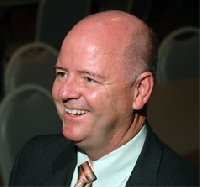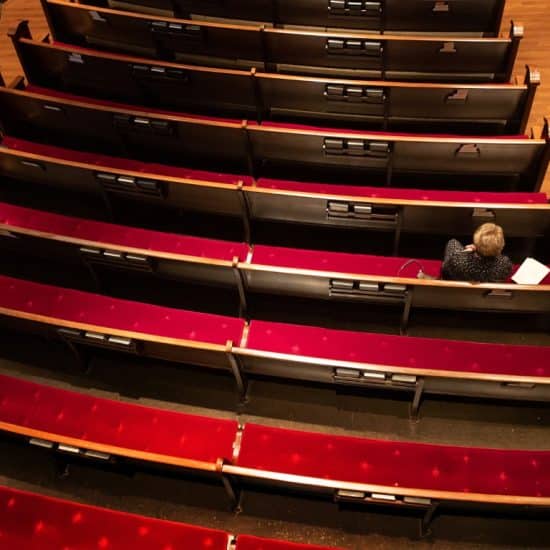(ABP) – Several months ago I half-heartedly pledged to my wife that I would read The Help when she finished the borrowed hardback from a friend who had raved about it. Then she cheated by reading several chapters aloud during a road trip. I was hooked.

David Wilkinson
|
In her popular debut novel, Kathryn Stockett depicts the working conditions of black domestic servants in the American South during the turbulent civil rights struggle of the 1960s. A film version opened in theaters Aug. 10.
The book is a compelling read, and the movie is an engaging, faithful adaptation of the novel. But what makes Stockett’s page-turner especially noteworthy (and controversial) is that the Southern-born, white author daringly assumes the personas of two black maids in Jackson, Miss., even rendering their voices in the thick dialect associated with many African Americans of that era and socioeconomic standing.
It was an audacious undertaking, and the author took her lumps from critics even as the book soared to No. 1 on the New York Times bestseller list.
The story unfolds through the voices of its three central characters. Skeeter, an aspiring writer freshly graduated from Ole Miss, has returned home to search for a job while suffering the indignities of her mother’s obsession with finding her a suitable husband. When her childhood friend launches a community “sanitation” initiative to require white homeowners to have a separate toilet for the “colored help,” Skeeter decides to write a book in which the community’s maids — with names disguised — relate their experiences.
Risking their livelihoods and perhaps even their lives, two women agree to sign on to Skeeter’s clandestine project. Aibeline is a wise and stalwart woman who has lovingly raised and nurtured 17 white children as a maid and nanny. Minny, her best friend, is an incredible cook, but a penchant for speaking her mind, especially when insulted and mistreated by her white employers and their friends, keeps getting her fired.

The feature-length adaptation of Stockett's novel was recently released.
|
This improbable alliance stirs in the threesome the courage to transcend the lines that society has used to define them and to expose the demeaning and dehumanizing ugliness of America’s entrenched racism.
Even as the reader cheers for these central characters, it is also painful to be reminded of the prevailing attitudes toward persons of color still held by good Christian families in segregated white neighborhoods, businesses, schools and churches a hundred years after the Civil War. Equally sobering is the recognition that most of us lived during, or are only a generation removed from, the system of segregation that Stockett portrays.
Shortly after moving into our home in Waco, Texas, we unrolled a set of original blueprints that the owners had left behind. The drawings for the house, built in 1948, included a buzzer installed in the dining room floor. The lady of the house would discreetly press the buzzer beneath the dining room table to summon “the help” from the kitchen. Today, there is only a mark in the floor where the buzzer was located.
After reading Stockett’s book, I thought about that buzzer and what it may have represented. I thought about all the lines — some stark and others more subtle – that are still used to stereotype and separate people today.
Deep down we know Minny is right. “I used to believe in ’em,” she muses about such lines. “I don’t anymore. They in our heads. Lines between black and white ain’t there neither. Some folks just made those up, long time ago. And that go for the white trash and the so-ciety ladies too.”
The lines may be in our heads, but they also work their way into our hearts. Cast and recast in various forms, they divide and distance us from “the other.”
Whatever its flaws, The Help can be more than a “feel good” experience about the triumph of the human spirit. For persons of faith, it presents the possibility for honest introspection and meaningful dialogue that can lead in turn to acts of justice and reconciliation. As we applaud the courage of the characters of Aibeline and Minny, those of us with privilege and power need to confess the ways that we have been quiet accomplices to the widening gap between the haves and the have-nots in America and the world. And we must pray for the courage to confront the rising tide of fear-mongering, stereotyping and scapegoating in religion and politics.
On Aug. 28, 1963, Rabbi Joachin Prinz came to the microphone to address the March on Washington crowd just before Martin Luther King, Jr., delivered his famous “I Have a Dream” speech. “Bigotry and hatred are not the most urgent problem,” Prinz said. “The most urgent, the most disgraceful, the most shameful and the most tragic problem is silence.”
David Wilkinson is executive director of Associated Baptist Press.
EDITORIAL DISCLAIMER: As part of our mission to provide credible and compelling information about matters of faith, Associated Baptist Press actively seeks a diversity of viewpoints in its columns, commentaries and other opinion-based content. Opinions expressed in these articles are not intended to represent ABP editorial policy and do not necessarily reflect the views of ABP's staff, board of directors or supporters.




